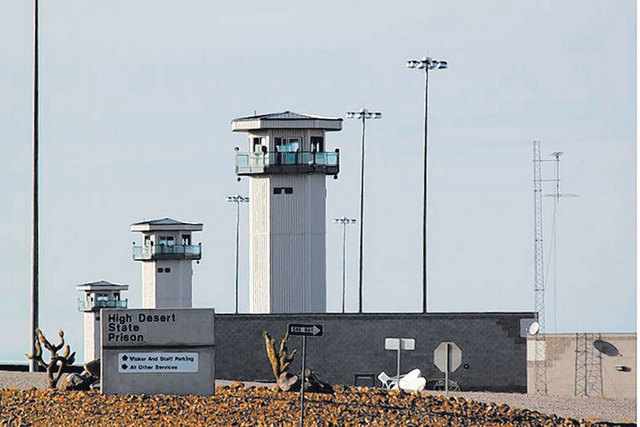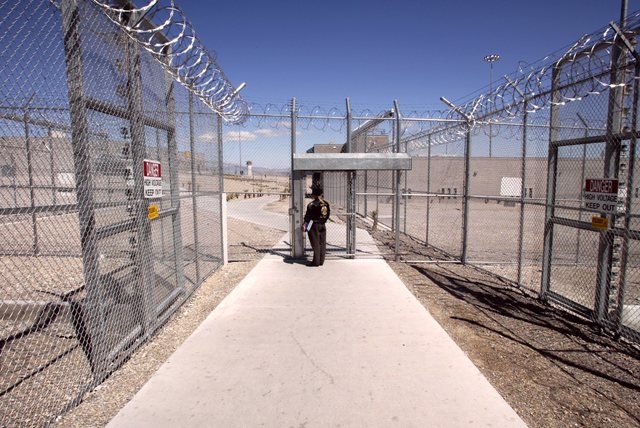Nevada courting disaster using recruits to supervise prison inmates


Nevada corrections officers admit they have trouble keeping staff for a thankless duty with poor pay and dangerous working conditions.
But they tell me the state is courting disaster by not adding certified staff and increasingly relying on untested recruits and untrained correctional officer assistants. Some of the assistants at High Desert have been used to escort inmates in violation of the department’s own policies.
Interviews with more than a dozen veteran corrections officers, who recently came forward on a condition of anonymity in the wake of the Review-Journal’s report of the shooting death of an inmate at High Desert State Prison, make a strong case for the enactment of immediate relief and reform for the neglected system.
An attempt Tuesday to reach state Department of Corrections Director Greg Cox for comment was unsuccessful, but prison system insiders are saying plenty. Corrections officers at High Desert contend the untrained assistants are used to pad staffing figures and make it appear they are meeting proper inmate supervision ratios. The raw recruits sometimes end up close to the action, they said.
Allowing them to shadow trained officers makes sense due to the challenging duty and high turnover rates. But some of them invariably end up handling prisoners. And that, they said, not only puts them in danger but raises possible litigation issues.
“They’re technically not allowed to be around the inmates,” one veteran officer observed. “They’re not allowed around the gun.”
Another added: “They’re trying to up the (staffing) numbers, but we can’t use those people anyway. Basically the only thing they can do is help feed them.”
Several of the experienced officers blamed the generally high turnover rate at High Desert and elsewhere for the increased reliance on inexperienced personnel. The challenging job description and low pay don’t engender much loyalty.
“I think that’s why so many people quit,” one corrections officer said. “They see the paycheck after everything’s taken out.”
Another added: “You can work at McDonald’s and make $500 every two weeks and not get urine thrown on you and not get in fights. That’s why we have a high turnover rate.”
A third said, “You can make more money at Starbucks or Home Depot.”
Veteran officers said the turnover rate at High Desert has exceeded 100 per year for the past four years. As a result, officers sometimes come to work and find the shift is short-staffed.
“Last year was the first year since 2010 that we didn’t lose at least 100 officers,” he veteran said.
That high turnover, which a variety of sources say is common in many states because of low salaries and the challenges of the job, puts additional stress on first-year officers. They have gone through several weeks of Peace Officer Standards and Training, but once, they’re on duty they often find themselves being taught by supervisors with little experience. That makes it tempting to let untrained assistants to do more than the rules provide.
“Sometimes they use them for escorts — only if they’re with another corrections officer,” one officer said. “They’re not supposed to.”
The officers, among the more experienced at High Desert, agreed to talk about their work after the Review-Journal in late March reported that inmate Carlos Perez’s Nov. 12, 2014, death came as a result of an officer-involved shooting during a fight between prisoners. The other inmate, Andrew Arevalo, was wounded and has filed a lawsuit through attorney Alexis Plunkett that accuses state prison officers of allowing the fight.
Veteran corrections officers didn’t attempt to defend the shooting by a rookie with several weeks on the job, but they also said he was supposedly being supervised by an officer with fewer than two years of experience. It’s a scenario that repeats itself often at High Desert.
And, they say, it is a recipe for neglect, abuse, and tragedy.
John L. Smith’s column appears Sunday, Tuesday, Wednesday, Friday and Saturday. Email him at Smith@reviewjournal.com or call 702-383-0295. Follow him on Twitter @jlnevadasmith


















